#South Indian spirituality
Text
Unveiling the Mystical Realm: A Journey into the Wisdom of Tamil Siddhars
Tamil mystics, also known as Siddhars, are spiritual figures from the Tamil region of South India and Sri Lanka who have attained extraordinary spiritual and mystical powers through intense meditation, yoga practices, and the mastery of the body and mind. The word “Siddhar” means “one who has achieved perfection” or “accomplished one” in Tamil.
The origin of Tamil mystics, known as Siddhars, can…

View On WordPress
#Holistic Healing#metaphysics#self-realization#Siddha medicine#Siddhars#South Indian spirituality#Spiritual enlightenment#Tamil Culture#Tamil mystics#Yoga practices
0 notes
Text
Varamahalakshmi 2024: Puja Rituals and Eight Forms of Goddess Lakshmi
Shop incense products at https://incenseomega.com/
#incense#ecommerce#home products#best incense#incense dhoops#top incense#dhoop#padma lakshmi#home decor#maa lakshmi#goddess lakshmi#lakshmi narayan#hinduism#vishnu#varamahalakshmi puja 2024#varalakshmi#varalakshmi 2024#spirituality#hindu mythology#hindu festivals#south indian festivals#best agarbatti brand in india#buy incense sticks online#meditation#incense sticks#puja rituals#celebrations
0 notes
Text
https://www.keralatourpackages.com/south-indian-spiritual-tour/
Book Wonderful South Indian Spiritual Tour | Kerala Tour Packages
To book a wonderful South Indian Spiritual Tour with Kerala Tour Packages, you can explore various options available through different tour operators. Some popular tours include the "South India Temples Tour With Kerala Total Spiritual All Inclusive" offered by Real Viaggi India. We are typically cover sacred landscapes, ancient temples, and provide a comprehensive look at the culture and history of the region. You can choose a tour that suits your preferences and embark on a soul-enriching journey through the spiritual sites of South India, including Kerala.
1 note
·
View note
Text

South indian coffee brass tumbler brass charnamrit glass
Combining elegance with utility, the brass glass boasts a generous capacity for your favorite drinks. Whether you desire a refreshing glass of water, a soothing herbal tea, or a chilled beverage, this tumbler elevates the everyday act of drinking into a delightful experience.
Purchase it here: https://www.pujanpujari.com/shop/south-indian-coffee-brass-tumbler-brass-charnamrit-glass/
0 notes
Text
In addition to my Monkey Man post from earlier, the always kind & sweet Aparna Verma (author of The Phoenix King, check it out) asked that I do a thread on Hijras, & more of the history around them, South Asia, mythology (because that's my thing), & the positive inclusion of them in Monkey Man which I brought up in my gushing review.
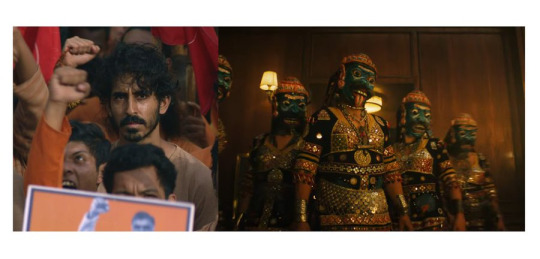
Hijra: They are the transgender, eunuch, or intersex people in India who are officially recognized as the third sex throughout most countries in the Indian subcontinent. The trans community and history in India goes back a long way as being documented and officially recognized - far back as 12th century under the Delhi Sultanate in government records, and further back in our stories in Hinduism. The word itself is a Hindi word that's been roughly translated into English as "eunuch" commonly but it's not exactly accurate.
Hijras have been considered the third sex back in our ancient stories, and by 2014 got official recognition to identify as the third gender (neither male or female) legally. Pakistan, Nepal, Bangladesh, and India have accepted: eunuch, trans, intersex people & granted them the proper identification options on passports and other government official documents.
But let's get into some of the history surrounding the Hijra community (which for the longest time has been nomadic, and a part of India's long, rich, and sometimes, sadly, troubled history of nomadic tribes/people who have suffered a lot over the ages. Hijras and intersex people are mentioned as far back as in the Kama Sutra, as well as in the early writings of Manu Smriti in the 1st century CE (Common Era), specifically said that a third sex can exist if possessing equal male and female seed.
This concept of balancing male/female energies, seed, and halves is seen in two places in South Asian mythos/culture and connected to the Hijra history.
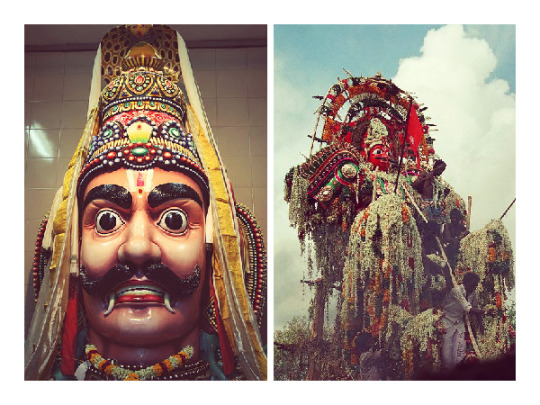
First, we have Aravan/Iravan (romanized) - who is also the patron deity of the transgender community. He is most commonly seen as a minor/village deity and is depicted in the Indian epic Mahabharata. Aravan is portrayed as having a heroic in the story and his self-sacrifice to the goddess Kali earns him a boon.

He requests to be married before his death. But because he is doomed to die so shortly after marriage, no one wants to marry him.
No one except Krishna, who adopts his female form Mohini (one of the legendary temptresses in mythology I've written about before) and marries him. It is through this union of male, and male presenting as female in the female form of Mohini that the seed of the Hijras is said to begun, and why the transgender community often worships Aravan and, another name for the community is Aravani - of/from Aravan.
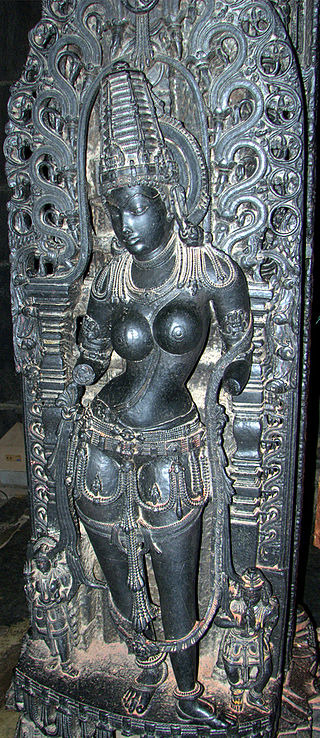
But that's not the only place where a gender non conforming divine representation can be seen. Ardhanarishvara is the half female form of lord Shiva, the destroyer god.
Shiva combines with his consort Parvarti and creates a form that represents the balancing/union between male/female energies and physically as a perfectly split down the middle half-male half-female being. This duality in nature has long been part of South Asian culture, spiritual and philosophical beliefs, and it must be noted the sexuality/gender has often been displayed as fluid in South Asian epics and the stories. It's nothing new.

Many celestial or cosmic level beings have expressed this, and defied modern western limiting beliefs on the ideas of these themes/possibilities/forms of existence.
Ardhanarishvara signifies "totality that lies beyond duality", "bi-unity of male and female in God" and "the bisexuality and therefore the non-duality" of the Supreme Being.
Back to the Hijra community.
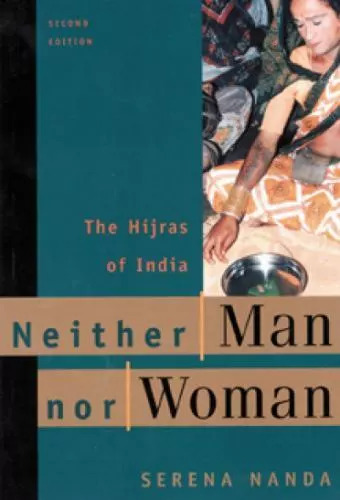
They have a complex and long history. Throughout time, and as commented on in the movie, Monkey Man, the Hijra community has faced ostracization, but also been incorporated into mainstream society there. During the time of the Dehli Sultanate and then later the Mughal Empire, Hijras actually served in the military and as military commanders in some records, they were also servants for wealthy households, manual laborers, political guardians, and it was seen as wise to put women under the protection of Hijras -- they often specifically served as the bodyguards and overseers of harems. A princess might be appointed a Hijra warrior to guard her.

But by the time of British colonialism, anti-Hijra laws began to come in place folded into laws against the many nomadic tribes of India (also shown in part in Monkey Man with Kid (portrayed by Dev Patel) and his family, who are possibly
one of those nomadic tribes that participated in early theater - sadly by caste often treated horribly and relegated to only the performing arts to make money (this is a guess based on the village play they were performing as no other details were given about his family).
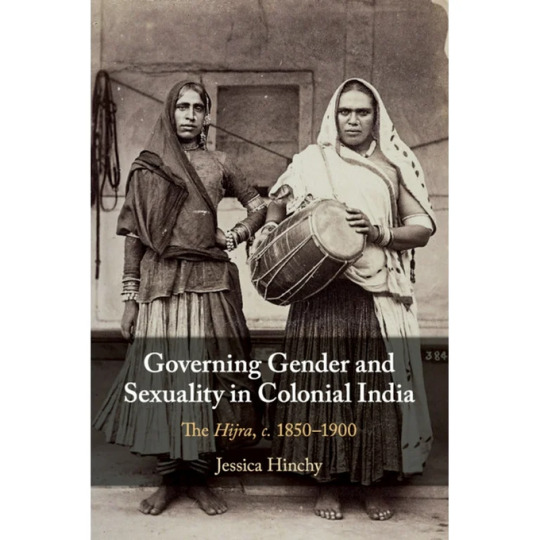
Hijras were criminalized in 1861 by the Indian Penal Code enforced by the British and were labeled specifically as "The Hijra Problem" -- leading to an anti-Hijra campaign across the subcontinent with following laws being enacted: punishing the practices of the Hijra community, and outlawing castration (something many Hijra did to themselves). Though, it should be noted many of the laws were rarely enforced by local Indian officials/officers. But, the British made a point to further the laws against them by later adding the Criminal Tribes Act in 1871, which targeted the Hijra community along with the other nomadic Indian tribes - it subjected them to registration, tracking/monitoring, stripping them of children, and their ability to sequester themselves in their nomadic lifestyle away from the British Colonial Rule.
Today, things have changed and Hijras are being seen once again in a more positive light (though not always and this is something Monkey Man balances by what's happened to the community in a few scenes, and the heroic return/scene with Dev and his warriors). All-hijra communities exist and sort of mirror the western concept of "found families" where they are safe haven/welcoming place trans folks and those identifying as intersex.
These communities also have their own secret language known as Hijra Farsi, which is loosely based on Hindi, but consists of a unique vocabulary of at least 1,000 words.
As noted above, in 2014, the trans community received more legal rights.
Specifically: In April 2014, Justice K. S. Radhakrishnan declared transgender to be the third gender in Indian law in National Legal Services Authority v. Union of India.
Hijras, Eunuchs, apart from binary gender, be treated as "third gender" for the purpose of safeguarding their rights under Part III of our Constitution and the laws made by the Parliament and the State Legislature. Transgender persons' right to decide their self-identified gender is also upheld and the Centre and State Governments are directed to grant legal recognition of their gender identity such as male, female or as third gender.
I've included some screenshots of (some, not all, and certainly not the only/definitive reads) books people can check out about SOME of the history. Not all again. This goes back ages and even our celestial beings/creatures have/do display gender non conforming ways.
There are also films that touch on Hijra history and life. But in regards to Monkey Man, which is what started this thread particularly and being asked to comment - it is a film that positively portrayed India's third sex and normalized it in its depiction. Kid the protagonist encounters a found family of Hijras at one point in the story (no spoilers for plot) and his interactions/acceptance, living with them is just normal. There's no explaining, justifying, anything to/for the audience. It simply is. And, it's a beautiful arc of the story of Kid finding himself in their care/company.
#hijra#trans representation#monkey man#dev patel#transgender#trans rights#trans rights are human rights#third sex#indian history#indian culture#colonialism#imperialism#south Asian mythos#South Asian myths#Aravan#Iravan#Mahabharata#hindu mythology#hindu gods#kali goddess#krishna#hindu mythology art#Ardhanarishvara#Shiva#Parvarti#sexuality#gender fluid#fluid sexuality#trans community#transgender rights
605 notes
·
View notes
Text
South Asian and Hindu Influences in ATLA (Part 2)
disclaimer: i was raised culturally and religiously hindu, and though i've tried to do my research for this post and pair it with my own cultural knowledge, i'm not an expert on hinduism by any means. should i mess up, please let me know.
please also be aware that many of the concepts discussed in this post overlap heavily with religions such as buddhism and jainism, which might have different interpretations and representations. as i'm not from those religions or cultures, i don't want to speak on them, but if anyone with that knowledge wishes to add on, please feel free.
Part 1
In the previous post, I discussed some of the things ATLA got right in its depictions of desi and hindu cultures. unfortunately, they also got plenty of things wrong - often in ways that leaned towards racist caricatures - so let's break them down, starting with...
Guru Pathik
both the word "guru" and name "pathik" come from sanskrit. pathik means "traveler" or "he who knows the way" while guru is a term for a guide or mentor, similar to a teacher.
gurus were responsible for the very first education systems in ancient india, setting up institutions called gurukuls. students, referred to as disciples, would often spend years living with and learning from their gurus in these gurukuls, studying vedic and buddhist texts, philosophy, music and even martial arts.
however, their learning was not limited merely to academic study, as gurus were also responsible for guiding the spiritual evolution of their disciples. it was common for disciples to meditate, practice yoga, fast for days or weeks, and complete mundane household chores every day in order to instill them with self-discipline and help them achieve enlightenment and spiritual awareness. the relationship between a guru and his disciple was considered a sacred, holy bond, far exceeding that of a mere teacher and student.
aang's training with guru pathik mirrors some of these elements. similar to real gurus, pathik takes on the role of aang's spiritual mentor. he guides aang in unblocking his chakras and mastering the avatar state through meditation, fasting, and self-reflection - all of which are practices that would have likely been encouraged in disciples by their gurus.
pathik's design also takes inspiration from sadhus, holy men who renounced their worldly ties to follow a path of spiritual discipline. the guru's simple, nondescript clothing and hair are reflective of the ascetic lifestyle sadhus are expected to lead, giving up material belongings and desires in order to achieve spiritual enlightenment and, ultimately, liberation from the reincarnation cycle.
unfortunately, this is where the respectful references end because everything else about guru pathik was insensitive at best and stereotypical at worst.
it is extremely distasteful that the guru speaks with an overexaggerated indian accent, even though the iranian-indian actor who plays him has a naturally british accent. why not just hire an actual indian voice actor if the intention was to make pathik sound authentic? besides, i doubt authenticity was the sole intention, given that the purposeful distortion of indian accents was a common racist trope played for comedy in early 2000s children's media (see: phineas and ferb, diary of a wimpy kid, jessie... the list goes on).
furthermore, while pathik is presented a wise and respected figure within this episode, his next (and last) appearance in the show is entirely the opposite.

in the episode nightmares and daydreams, pathik appears in aang's nightmare with six hands, holding what appears to be a veena (a classical indian music instrument). this references the iconography of the hindu deity Saraswati, the goddess of wisdom and knowledge. the embodiment of divine enlightenment, learning, insight and truth, Saraswati is a member of the Tridevi (the female version of the Trimurti), one of the most respected and revered goddesses in the Hindu pantheon... and her likeness is used for a cheap laugh on a character who's already treated as a caricature.
that's bad enough on its own, but when you consider that guru pathik is the only explicitly south asian coded character in the entire show, it's downright insulting. for a show that took so many of its foundational concepts from south asia and hinduism and yet provided almost no desi representation in return, this is just rubbing salt in the wound.
Chakras
"chakra", meaning "circle" or "wheel of life" in sanskrit, refers to sources of energy found in the human body. chakra points are aligned along the spine, with energy flowing from the lowest to the highest point. the energy pooled at the lowest chakra is called kundalini, and the aim is to release this energy to the highest chakra in order to achieve spiritual enlightenment and consciousness.
the number of chakras varies in different religions, with buddhism referencing five chakras while hinduism has seven. atla draws from the latter influence, so let's take a look at the seven chakras:
Muladhara (the Root Chakra). located at the base of the spine, this chakra deals with our basest instincts and is linked to the element of earth.
Swadhisthana (the Sacral Chakra). located just below the navel, this chakra deals with emotional intensity and pleasure and is linked to the element of water.
Manipura (the Solar Plexus Chakra). located in the stomach, this chakra deals with willpower and self-acceptance and is linked to the element of fire.
Anahata (the Heart Chakra). located in the heart, this chakra deals with love, compassion and forgiveness and is linked to the element of air. in the show, this chakra is blocked by aang's grief over the loss of the air nomads, which is a nice elemental allusion.
Vishudda (the Throat Chakra). located at the base of the throat, this chakra deals with communication and honesty and is linked to the fifth classical element of space. the show calls this the Sound Chakra, though i'm unsure where they got that from.
Ajna (the Third Eye Chakra). located in the centre of the forehead, this chakra deals with spirituality and insight and is also linked to the element of space. the show calls it the Light Chakra, which is fairly close.
Sahasrara (the Crown Chakra). located at the very top of the head, this chakra deals with pure cosmic consciousness and is also linked to the element of space. it makes perfect sense that this would be the final chakra aang has to unblock in order to connect with the avatar spirit, since the crown chakra is meant to be the point of communion with one's deepest, truest self.
the show follows these associations and descriptions almost verbatim, and does a good job linking the individual chakras to their associated struggles in aang's arc.
Cosmic Energy
the idea of chakras is associated with the concept of shakti, which refers to the life-giving energy that flows throughout the universe and within every individual.
the idea of shakti is a fundamentally unifying one, stating that all living beings are connected to one another and the universe through the cosmic energy that flows through us all. this philosophy is referenced both in the swamp episode and in guru pathik telling aang that the greatest illusion in the world is that of separation - after all, how can there be any real separation when every life is sustained by the same force?
this is also why aang needing to let go of katara did not, as he mistakenly assumed, mean he had to stop loving her. rather, the point of shedding earthly attachment is to allow one to become more attuned to shakti, both within oneself and others. ironically, in letting go of katara and allowing himself to commune with the divine energy of the universe instead, aang would have been more connected to her - not less.
The Avatar State
according to hinduism, there are five classical elements known as pancha bhuta that form the foundations of all creation: air, water, earth, fire, and space/atmosphere.
obviously, atla borrows this concept in making a world entirely based on the four classical elements. but looking at how the avatar spirit is portrayed as a giant version of aang suspended in mid-air, far above the earth, it's possible that this could reference the fifth liminal element of space as well.
admittedly this might be a bit of a reach, but personally i find it a neat piece of worldbuilding that could further explain the power of the avatar. compared to anyone else who might be able to master only one element, mastering all five means having control of every building block of the world. this would allow the avatar to be far more attuned to the spiritual energy within the universe - and themselves - as a result, setting in motion the endless cycle of death and rebirth that would connect their soul even across lifetimes.
#atla#atla cultural influences#hinduism in atla#welp i thought this would be the last part but i ended up having more to talk about than i thought#so i'll save the book 3 inspirations for the next post#including my absolute favourite combustion man#and by favourite i mean kill it with fire why did you ever think this was okay to do writers
481 notes
·
View notes
Text
MYTHS OF VEDIC ASTROLOGY 2
Myth 1: Uranus, Neptune, pluto and lilith are part of Vedic astrology.
Reality: Traditional Vedic astrology doesn't include Uranus, Neptune, pluto or lilith. Using these planets might give wrong predictions as Vedic charts are drawn from ayanamsa with specific rules.
Myth 2: Vedic Astrology has wheel chart system.
Reality: Vedic astrology has it's own system of drawing charts. It doesn't rely on wheel charts. It uses charts in South Indian or North Indian format popularly.
Myth 3: Vedic astrology or Jyotish is not part of Hinduism.
Reality: Jyotish is an integral part of Hinduism. It's called Vedanga and many Hindu scriptures mention the importance of Jyotish or Astrology.
Myth 4: Vedic Astrology is only used for fortune telling like marriage or childbirth.
Reality: Vedic astrology can be used in medical treatments. It is possible to detect the illness and proper treatment from your birth chart. Prediction is only one of the applications of astrology.
Myth 5: Vedic Astrology can be used for business.
Reality: No. Vedic astrology is mainly for spiritual growth and helping others. As per one of the prominent astrologers K. N. Rao, Astrology is a bridge between known and the unkown. It can show you the path towards devotion by granting dispassion(Vairagya).
Myth 6: Moola nakshatra girls bring misfortune.
Reality: Need to analyse other combinations too. Just by analysing moon nakshatra, we cannot decide anything.
Myth 7: Vedic astrology has one system.
Reality: Many people won't be aware that Vedic astrology uses different systems such as Jaimini, Lal kitab and parashari. Jaimini and Parashari systems have a great difference of viewing things even though they arrive at the same conclusion.
Myth 8: Venus placement is enough to decide your love life.
Reality: It's the biggest myth. 7th lord should be analysed necessarily. Both kaaraka and lord should be analysed for results.
Myth 9: Remedies don't work.
Reality: Remedies do work. One should always follow the remedies told by professional astrologers.
Myth 10: Swami Vivekananda was against astrology.
Reality: Now.. This is the biggest myth. Swami vivekananda didn't want people to dependent on astrology fully rather dependent on themselves. In his times, India was under the slavery of British. It was necessary to liberate people from slavery and make them independent. Indians were too much superstitious and relied too much on astrology. They were losing self belief. If Krishna cheats Kauravas in Kurukshetra, it doesn't mean cheating is the right thing. He did it to establish Dharma. So it was necessary to lift up people as per swami Vivekananda. In one of his speeches, he mentions sanyas yog existed in his birth chart. Liberals like Dhruv Rathee ignore these facts and twist Jyotish as superstitious to suit their agenda.
66 notes
·
View notes
Text

Mount Shasta
There’s a well-known legend that says that somewhere deep beneath Northern California’s 14,179-foot-tall Mount Shasta is a complex of tunnels and a hidden city called Telos, the ancient “City of Light” for the Lemurians. They were the residents of the mythical lost continent of Lemuria, which met its demise under the waves of the Pacific (or the Indian Ocean, depending on who you ask) thousands of years ago. Lemurians believed to have survived the catastrophe are said to have settled in Telos, and over the years their offspring have been sporadically reported wandering around the area: seven-feet-tall, with long flowy hair, often clad in sandals and white robes.
Lemurians aren’t the only unusual figures said to inhabit this stand-alone stratovolcano, easily seen from Interstate 5, about 60 miles south of the Oregon border. Mount Shasta is believed to be a home base for the Lizard People, too, reptilian humanoids that also reside underground. The mountain is a hotbed of UFO sightings, one of the most recent of which occurred in February 2020. (It was a saucer-shaped lenticular cloud.) In fact, the mountain is associated with so many otherworldly, paranormal, and mythical beings—in addition to long-established Native American traditions—that it’s almost like a who’s who of metaphysics. It has attracted a legion of followers over the years, including “Poet of the Sierras” Joaquin Miller and naturalist John Muir, as well as fringe religious organizations such as the Ascended Masters, who believe that they’re enlightened beings existing in higher dimensions. What is it about this mountain in particular that inspires so much belief?
“There’s a lot about Mount Shasta, and volcanoes in general, that are difficult to explain,” says Andrew Calvert, scientist-in-charge at the California Volcano Observatory, “and when you’re having difficulty explaining something, you try and understand it.” Calvert has studied Shasta’s eruptive history since 2001. “It’s such a complicated and rich history,” he says, “and Shasta itself is also very visually powerful. These qualities build on each other to make it a profound place for a lot of people—geologists, spirituality seekers … even San Francisco tech folks, and hunters and gatherers from 10,000 years ago. It’s one that can have a really strong effect on your psyche.”
Mount Shasta is one of the most prominent of all the Cascade volcanoes, an arc that runs from southwestern British Columbia to Northern California, and includes Washington’s Mount Rainier and Oregon’s Mount Hood, among others. “It’s so steep and so tall that it even creates its own weather,” says Calvert. This includes the spaceship-looking lenticular clouds that tend to form around the mountain, created, he says, “by a humid air mass that hits the volcano, and then has to go up a little bit to cool off.” But they only contribute to Shasta’s supernatural allure, along with its ice-clad peak, steaming fumaroles, and shape-shifting surface that’s being constantly broken down and rebuilt by ice, water, wind, and debris. The mountain also sits about 15 miles or so west of the standard arc line of the other Cascade volcanoes—a move that took place about 700,000 years ago. “We don’t really have a good explanation for why it moved out there,” Calvert says, a statement that seems to make Mount Shasta’s mysteries appear more otherworldly by the minute.
The Mount Shasta spiritual legacy goes far deeper than contemporary myths and sightings. For Native Americans in particular, the mountain is a sacred place, straddling the territories of the Shasta, Wintu, Achumawi, Atsugewi, and Modoc tribes, which can date their lineages back to a time when eruptions actually took place there. (Its last eruption, says Calvert, was a little over 3,000 years ago.)
There’s Something About Mount Shasta
42 notes
·
View notes
Note
Hi! You mentioned in a prev oneshot that you were Indian, as a fellow south asian it is so nice to have someone into the fandom as well !!! May I have a request if batboys with an south asian so who does Indian classical dance like bharatnatyam or odissi please?
Heyyy I have never professionally learned classical Indian dances but I love watching them so ill try my best. Im sorry if its offensive, Im doing fem reader cuz gn wasn't requested..hope that okay too
Batboys x Dancer!Y/N
Dick grayson
He loved the story the dances depicted. He learned all the meanings and history behind all the hand movements and music.
Dick had probably been to India for a mission so he does know a little about indian history but now he has a much stronger motivation to learn everything and anything about that culture .
Also we all know dick has a thing for strong powerful women. And Bharatnatyam or Odssi or any indian classical dance for that matter REQUIRES SO MUCH STRENGTH . The facial expressions, the precise movement and the beauty of it all..he is whipped.
'He also loves when you get in touch with your culture. Dick is like a culture connoisseur and having a beautiful south asian girlfriend who is proud and expressive of her heritage makes him so proud.
He for sure has videos on videos which he show or boast about to anyone- even at galas , his favorite thing to talk about you and he is just so proud.
Jason Todd
I dont think todd will take the time to look into the difference meanings or stories these dances depict.
I have mentioned how much he stares and now he has a new found excuse to stress. Its like those movie montages of the wife through the husbands eyes where there is like a light glow behind her and he is just laughing (and then she dies or something)- idk if you know what I'm talking about but that exact thing happens with him.
you are like his salvation , so beautiful, golden poised and graceful. Its like a beggar seeing a goddess , a murderer on the steps of church or a ray of sunshine in the cold cold dark city - it becomes his way to spirituality.
He doesn't talk that much about it. the whole experience feels too surreal for him and he loves to see that side of you. when your practicing and don't have the routine perfected, he loves seeing the side of you no one else would get to see.
Tim drake-
This boy probably went to the ballet as a kid and I mean western rich parents-gotham city- I don't think he knows anything about indian classical dance so when he sees it for the first time he is shocked
He Is so intrigued , It just makes you so much cooler. He will love dropping in the middle of his patrols to watch you train and bring you snacks
He also loves doing your makeup for you , and the whole outfit....it looks super complicated and he is good with assembling stuff so he'll be really into it.
He would tbh encourage you to use your skill to start and internet channel and use that to promote movements. Also if you are into the idea of teaching immigrant kids on how to dance, he'll help find the means because being connected to your roots are just so important.
Rather than boring ass ballet in galas , he will promote other styles of dance especially indian classical.
Will cheer like a madman after your performances , even if they are at rich gotham galas. "WOHOO THATS MY GIRL THATS REAL ART YOU SEE THAT YOU RICH PRICKS"
Yea just because you have this super serious super cool skill doesn't mean you both wont be sitting in a dinner eating greasy food in the whole costume+makeup after performances. Youre still teenage dirtbags after all
Damian wayne-
he will draw you . loves sitting and sketching you dance .
He too is really into strong women and appreciates the beauty and precise art of indian dance.
Itll remind him of his home, like up in the mountains. Maybe dance is taught as a way of developing balance and precision. So to him you look like a strong fighter.
It just brings nostalgia and you look so ethereal while you dance. I think out of all batboys he would be most appreciative of the art
these are comparatively shorter but i didnt have too many thoughts. hope its okay tho
#Tim Drake + Red Robin#•#Tim Drake x Reader#Tim Drake x You#Tim Drake x Y/N#Tim Drake Fluff#Tim Drake Angst#Tim Drake Comfort#Tim Drake Headcanons#Tim Drake Imagines#Red Robin x Reader#Red Robin x You#Red Robin x Y/N#Batfamily#Batfamily x Reader#Batfamily Fluff#Batfamily x You#Batfamily x Y/N#Batfamily Headcanons#Batfamily Imagines#Batboys#Batboys x Reader#Batboys Fluff#Batboys Headcanons#Batboys Imagines#Jason Todd + Red Hood#Jason Todd x Reader#Jason Todd x You#Jason Todd x Y/N#Jason Todd Fluff
66 notes
·
View notes
Text

Excerpt from this story from the Associated Press (AP):
The reported birth of a rare white buffalo in Yellowstone National Park fulfills a Lakota prophecy that portends better times, according to members of the American Indian tribe who cautioned that it’s also a signal that more must be done to protect the earth and its animals.
“The birth of this calf is both a blessing and warning. We must do more,” said Chief Arvol Looking Horse, the spiritual leader of the Lakota, Dakota and the Nakota Oyate in South Dakota, and the 19th keeper of the sacred White Buffalo Calf Woman Pipe and Bundle.
The birth of the sacred calf comes as after a severe winter in 2023 drove thousands of Yellowstone buffalo, also known as bison, to lower elevations. More than 1,500 were killed, sent to slaughter or transferred to tribes seeking to reclaim stewardship over an animal their ancestors lived alongside for millennia.
For the Lakota, the birth of a white buffalo calf with a black nose, eyes and hooves is akin to the second coming of Jesus Christ, Looking Horse said.
Lakota legend says about 2,000 years ago — when nothing was good, food was running out and bison were disappearing — White Buffalo Calf Woman appeared, presented a bowl pipe and a bundle to a tribal member, taught them how to pray and said that the pipe could be used to bring buffalo to the area for food. As she left, she turned into a white buffalo calf.
“And some day when the times are hard again,” Looking Horse said in relating the legend, “I shall return and stand upon the earth as a white buffalo calf, black nose, black eyes, black hooves.”
A similar white buffalo calf was born in Wisconsin in 1994 and was named Miracle, he said.
Troy Heinert, the executive director of the South Dakota-based InterTribal Buffalo Council, said the calf in Braaten’s photos looks like a true white buffalo because it has a black nose, black hooves and dark eyes.
“From the pictures I’ve seen, that calf seems to have those traits,” said Heinert, who is Lakota. An albino buffalo would have pink eyes.
A naming ceremony has been held for the Yellowstone calf, Looking Horse said, though he declined to reveal the name. A ceremony celebrating the calf’s birth is set for June 26 at the Buffalo Field Campaign headquarters in West Yellowstone.
50 notes
·
View notes
Text
In the age of Hindu identity politics (Hindutva) inaugurated in the 1990s by the ascendancy of the Indian People's Party (Bharatiya Janata Party) and its ideological auxiliary, the World Hindu Council (Vishwa Hindu Parishad), Indian cultural and religious nationalism has been promulgating ever more distorted images of India's past.
Few things are as central to this revisionism as Sanskrit, the dominant culture language of precolonial southern Asia outside the Persianate order. Hindutva propagandists have sought to show, for example, that Sanskrit was indigenous to India, and they purport to decipher Indus Valley seals to prove its presence two millennia before it actually came into existence. In a farcical repetition of Romanic myths of primevality, Sanskrit is considered—according to the characteristic hyperbole of the VHP—the source and sole preserver of world culture.
This anxiety has a longer and rather melancholy history in independent India, far antedating the rise of the BJP. [...] Some might argue that as a learned language of intellectual discourse and belles lettres, Sanskrit had never been exactly alive in the first place [...] the assumption that Sanskrit was never alive has discouraged the attempt to grasp its later history; after all, what is born dead has no later history. As a result, there exist no good accounts or theorizations of the end of the cultural order that for two millennia exerted a transregional influence across Asia-South, Southeast, Inner, and even East Asia that was unparalleled until the rise of Americanism and global English. We have no clear understanding of whether, and if so, when, Sanskrit culture ceased to make history; whether, and if so, why, it proved incapable of preserving into the present the creative vitality it displayed in earlier epochs, and what this loss of effectivity might reveal about those factors within the wider world of society and polity that had kept it vital.
[...] What follows here is a first attempt to understand something of the death of Sanskrit literary culture as a historical process. Four cases are especially instructive: The disappearance of Sanskrit literature in Kashmir, a premier center of literary creativity, after the thirteenth century; its diminished power in sixteenth century Vijayanagara, the last great imperial formation of southern India; its short-lived moment of modernity at the Mughal court in mid-seventeenth century Delhi; and its ghostly existence in Bengal on the eve of colonialism. Each case raises a different question: first, about the kind of political institutions and civic ethos required to sustain Sanskrit literary culture; second, whether and to what degree competition with vernacular cultures eventually affected it; third, what factors besides newness of style or even subjectivity would have been necessary for consolidating a Sanskrit modernity, and last, whether the social and spiritual nutrients that once gave life to this literary culture could have mutated into the toxins that killed it. [...]
One causal account, however, for all the currency it enjoys in the contemporary climate, can be dismissed at once: that which traces the decline of Sanskrit culture to the coming of Muslim power. The evidence adduced here shows this to be historically untenable. It was not "alien rule un sympathetic to kavya" and a "desperate struggle with barbarous invaders" that sapped the strength of Sanskrit literature. In fact, it was often the barbarous invader who sought to revive Sanskrit. [...]
One of these was the internal debilitation of the political institutions that had previously underwritten Sanskrit, pre-eminently the court. Another was heightened competition among a new range of languages seeking literary-cultural dignity. These factors did not work everywhere with the same force. A precipitous decline in Sanskrit creativity occurred in Kashmir, where vernacular literary production in Kashmiri-the popularity of mystical poets like Lalladevi (fl. 1400) notwithstanding-never produced the intense competition with the literary vernacular that Sanskrit encountered elsewhere (in Kannada country, for instance, and later, in the Hindi heartland). Instead, what had eroded dramatically was what I called the civic ethos embodied in the court. This ethos, while periodically assaulted in earlier periods (with concomitant interruptions in literary production), had more or less fully succumbed by the thirteenth century, long before the consolidation of Turkish power in the Valley. In Vijayanagara, by contrast, while the courtly structure of Sanskrit literary culture remained fully intact, its content became increasingly subservient to imperial projects, and so predictable and hollow. Those at court who had anything literarily important to say said it in Telugu or (outside the court) in Kannada or Tamil; those who did not, continued to write in Sanskrit, and remain unread. In the north, too, where political change had been most pronounced, competence in Sanskrit remained undiminished during the late-medieval/early modern period. There, scholarly families reproduced themselves without discontinuity-until, that is, writers made the decision to abandon Sanskrit in favor of the increasingly attractive vernacular. Among the latter were writers such as Kesavdas, who, unlike his father and brother, self-consciously chose to become a vernacular poet. And it is Kesavdas, Biharilal, and others like them whom we recall from this place and time, and not a single Sanskrit writer. [...]
The project and significance of the self-described "new intellectuals" in the sixteenth and seventeenth centuries [...] what these scholars produced was a newness of style without a newness of substance. The former is not meaningless and needs careful assessment and appreciation. But, remarkably, the new and widespread sense of discontinuity never stimulated its own self-analysis. No idiom was developed in which to articulate a new relationship to the past, let alone a critique; no new forms of knowledge-no new theory of religious identity, for example, let alone of the political-were produced in which the changed conditions of political and religious life could be conceptualized. And with very few exceptions (which suggest what was in fact possible), there was no sustained creation of new literature-no Sanskrit novels, personal poetry, essays-giving voice to the new subjectivity. Instead, what the data from early nineteenth-century Bengal-which are paralleled every where-demonstrate is that the mental and social spheres of Sanskrit literary production grew ever more constricted, and the personal and this-worldly, and eventually even the presentist-political, evaporated, until only the dry sediment of religious hymnology remained. [...]
In terms of both the subjects considered acceptable and the audience it was prepared to address, Sanskrit had chosen to make itself irrelevant to the new world. This was true even in the extra-literary domain. The struggles against Christian missionizing, for example, that preoccupied pamphleteers in early nineteenth-century Calcutta, took place almost exclusively in Bengali. Sanskrit intellectuals seemed able to respond, or were interested in responding, only to a challenge made on their own terrain-that is, in Sanskrit. The case of the professor of Sanskrit at the recently-founded Calcutta Sanskrit College (1825), Ishwarachandra Vidyasagar, is emblematic: When he had something satirical, con temporary, critical to say, as in his anti-colonial pamphlets, he said it, not in Sanskrit, but in Bengali. [...]
No doubt, additional factors conditioned this profound transformation, something more difficult to characterize having to do with the peculiar status of Sanskrit intellectuals in a world growing increasingly unfamiliar to them. As I have argued elsewhere, they may have been led to reaffirm the old cosmopolitanism, by way of ever more sophisticated refinements in ever smaller domains of knowledge, in a much-changed cultural order where no other option made sense: neither that of the vernacular intellectual, which was a possible choice (as Kabir and others had earlier shown), nor that of the national intellectual, which as of yet was not. At all events, the fact remains that well before the consolidation of colonialism, before even the establishment of the Islamicate political order, the mastery of tradition had become an end in itself for Sanskrit literary culture, and reproduction, rather than revitalization, the overriding concern. As the realm of the literary narrowed to the smallest compass of life-concerns, so Sanskrit literature seemed to seek the smallest possible audience. However complex the social processes at work may have been, the field of Sanskrit literary production increasingly seemed to belong to those who had an "interest in disinterestedness," as Bourdieu might put it; the moves they made seem the familiar moves in the game of elite distinction that inverts the normal principles of cultural economies and social orders: the game where to lose is to win. In the field of power of the time, the production of Sanskrit literature had become a paradoxical form of life where prestige and exclusivity were both vital and terminal.
The Death of Sanskrit, Sheldon Pollock, Comparative Studies in Society and History, Vol. 43, No. 2 (Apr., 2001), pp. 392-426 (35 pages)
81 notes
·
View notes
Text
Headcanon: Pavitr knows Kalaripayattu and uses it when he fights
History:
Kalaripayattu is an ancient form of martial arts that was specifically designed for the battlefield. It originated in a state named Kerala, in South-western India and is actually fairly similar to Kung-Fu.
In the 13th-16th century, Kalaripayattu was a way of life in Kerala, believed to have been often taught to children as customary training. However, after the British Invasion and imperialism of India, Britain set laws in place to quell any possibility of Indian rebellion, preventing people from practicing or training in this martial art form. After this, it was only taught and practiced in very rural areas in order to avoid confrontation with the law.
Eventually, in the 1920s, it was revived and during a period of traditional rediscovery. There was a rise in the number of Kalaripayattu schools and Kalaripayattu presentations gained a lot of popularity. Now, although still not as well-known as many of the other Asian martial arts, it is a widely-known martial art form in South India and practiced by many.
It is also believed to be the oldest surviving martial art in the world, with a history spanning over 3000 years.
Style:
Like most martial arts, Kalaripayattu focuses on mind over body. Having complete control over your mind is essential to being able to succeed in mastering this art.
Ashtha Vadivu are 8 poses derived from the instinctual movements of wild animals, poses that were designed to make your body more flexible and powerful. They also help the student develop balance and stability.
Maithari are 18 different exercises practiced to achieve peak physical fitness and heightened reflexes. By practicing these, one can strengthen their body and their mind in order to be able to properly participate in combat situations.
Kalaripayattu also involves the usage of different kinds of weapons. Spears, swords and shields are all used, along with maces and really any weapon that can slash, stab or cut. Special wooden whips, knives and staffs can also be used.
youtube
This is an example of a Kalaripayattu tournament!
Headcanon:
In the comics, Pavitr was often bullied because of the fact that he came from a small town and wore different clothes than the other boys in Mumbattan. He was given his powers by an ancient Yogi, gaining the magical powers of a spider.
Because Kalaripayattu is very spiritual and based off the religious myths, it would make sense for Pavitr to incorporate it into his fighting style! I think he would've learned it prior in order to protect himself from his bullies, and eventually began to use it when he fought villains as Spider-man as well.
Its a lethal fighting style with weapons, but in hand-to-hand combat, wouldn't be as deadly so it would make sense for Pavitr to use it when he fights, in order to defend himself or strike his enemies.
Just random thoughts <3
Sources below the cut!
#across the spiderverse#atsv#spiderman atsv#miles morales#beyond the spiderverse#pavitr prabhakar#spiderman#pavitr headcanons#atsv pavitr#spiderverse pavitr#pavitr my beloved#itsv#atsv spoilers#pavi#pavtir prabhakar#atsv headcanons#spiderman headcanons#spiderman headcanons#indian spiderman#spiderman india#mumbattan#earth 50101#pavitr deserves accurate characterization!!#spider man across the spider verse#spiderman across the spiderverse#across the spider verse#spiderman across the verse#spiderman: across the spiderverse#spider man: across the spider verse#btsv
54 notes
·
View notes
Text
Queer Glossary of Muslim/Islamic World:
This is a list of gender & sexuality related terms, used in Muslim/Islamic World.
Mithli/Mithly - postmodern Arabic term for queer folks
Mithliya - feminine form word “Mithli”, refers to lesbians, sapphics, queer women
Kwiir/Kwiiriya - arabized version of word queer
Mukhannas/Mukhannath/Mokhannas/Mukhanathan/Mukhannathin - archaic Arabic term for trans woman, trans femme, individuals of non-normative gender and/or sexuality
Mukhannith - classical Arabic term for transsexual woman
Mutarajilla/Mutarajil/Mutarajilat - archaic Arabic term for masculinized female, trans male, trans-masculine. It is masculine equivalent of word “Mukhannath”
Boyah/Boyat - a term used in persian gulf states to describe masculine women,butch, & AFAB gender non-confirming
Mustargil/Mustarjil/Mustarajil/Mustarajjila- vernacular term for trans male/trans-masculine folks in Marsh Arab tribe
Mabun/Maabun - archaic term for an eunuch homosexual male who take passive role in Islamicate World.
Khanith/Khaneeth/Xanith/Makhanith - vernacular term for AMAB transgender, gender non-confirming, queer in Arabian Peninsula. The Khanith is also a third gender/sex community of Arabian peninsula.
Khuntha/Khunsha - archaic Arabic term used to describe intersex & ambiguous gender individuals in Muslim World.
Khuntha Mushkil - term for non-binary & gender non-confirming intersex individuals.
Khasi/Khasee - archaic term for eunuchs in Arabic/MENA Islamic empires
Khusra/Khusray/Khusaray/Khusara - Pejorative word for eunuch transgender, gender non-confirming individuals in Pakistan & Northernmost India. The word derived from Punjabi
Murat/Muraat/Morat/Moorat - vernacular term for transgender, eunuch, gender-diverse folks in Pakistan. It is also used in some parts of Afghanistan.The word Murat is itself a portmanteau of Mard (meaning man) and Aurat (meaning woman)
Hijra/Hijre/Hijjara/Hijarah/Hijada – all-encompassing term for gender & sexual diverse folks in the Indian subcontinent. The term includes trans femme, mtf transsexual, masculine woman, effeminate gay man, cisgendered drag queen, androgyne, transvestite, queer, eunuch, non-binary & intersex individual
Khawaal - term for MTF transsexual, transvestite & effeminate dancers in Pre-mordern Egypt.
Köçek - archaic term for effeminate male, gender fluid dancers in Ottoman society. The term also refers to feminine boys regardless of their sexual orientation. “Cengi” is female counterpart of Köçek.
Khawaja sara/Khwaja sara/Khwaja sira/Khawaja sira/Khwajasera/Khwaja saray - Persian archaic term used to describe a range of gender identities, including trans woman, gender fluid, effeminate (mukhannas), eunuch, trans-masculine, and trans-feminine individuals in South Asia. It goes beyond being just a gender or sexual identity; it is also associated with gender spirituality. This term was historically used to designate trans and non-binary individuals in Medieval Muslim empires. Nowadays, the term khawaja sara/khwajasara has become a subset of Hijra
Kothi - pejorative slang term for effeminate men, gay transvestites, drag queen, passive homosexuals in Indian subcontinent. In pakistan, kothis are referred as “Zenana”.
Panthi - slang term for dominant, hard, masculine gay & bisexual male in Bangladesh, Pakistan & India. This term derived from to Hijra Farsi or Ulti Bhasha
Parikh/Paarikh - slang term refers to boyfriend & husband in Bangladesh. This word is mostly used among LGBTQ+ population
Dohpartaa or Dohpartah - informal, slang term for bisexual in Bangladesh & West Bengal. The word derived from the Hijra Farsi or Ulti language.
Mamsuh - Arabic term for intersex person, who is agender or genderless.
Hum Jins, Hum jinsi, Ham-jense, Ham-jens – homosexual in Urdu, Persian, Tajik language
Ham-jins bâz/Ham-jens bâz – a derogatory term for gays in Farsi-speaking communities.
Ham-jens-garâ - slurr for homosexual in Farsi
Ham-jins garo - pejorative term for homosexuals in Tajikistan
Do jens garâ/Doh jense garâ - term for bisexual in Farsi
Mak Nyah - term for transgender woman, MTF transsexual in Malaysia. The term “Mak Nyah” is widely used among trans women, mukhannath/ trans-feminine folks. The term was first coined in late 1980s.
Pak Nyah - informal,vernacular term for trans men in Malaysia.
Waria - Indonesian term for AMAB trans folks in Indonesia. Warias are considered as third gender in Indonesia.
Priawan - vernacular term for trans-masculine in Indonesia.
Bissu - a term used to describe non-binary or two spirit identity in Bugie Tribe of Indonesia
Burnesha - vernacular term used to describe trans-masculine,butch in Ottoman empire of balkan & Albania.
Chokri/Chukri - term for drag queens, transvestites who are associated with “Alcap gaan”, a sufi folk music. This cross-gender phenomenon can be found in Bangladesh & West Bengal. Chukri individuals may identify as straight, gay, bisexual, or trans. Muslim Chukris are devotee of sufi saint Madar Pir/Madari Pir.
Zenana/Jenanah - vernacular term for effeminate male,MTF transvestite in Bangladesh,Pakistan,Northern India.The term Zenana derived from Urdu or Farsi, which means feminine.
Bachaa posh - vernacular term for FTM crossdresser, trans-masculine in Afghani dialect
Bacha Bareesh - pejorative vernacular term for effeminate boy, passive homosexual,transgender folks in Afghanistan. Bacha Bareesh are effeminate boys,MTF drag queens who take part in Bacha bazi.
Bacha Nagma - a term used for sufi transvestite or drag dancers in Kashmir.
Gej – non-derogatory term for gays in Balkan regions. It is used in Bosnia & Herzegovina, Albania, Kosovo, Serbia, Macedonia, Romania.
Dygjinishëm - Albanian term for bisexual
132 notes
·
View notes
Photo

On this day, 15 December 1890, Hunkpapa Lakota leader Tȟatȟáŋka Íyotake (Sitting Bull) was killed by Indian police in the Standing Rock Reservation in South Dakota. Indian agent James McLauchlan had sent 39 officers and four volunteers to arrest Tȟatȟáŋka Íyotake, fearing the growth of the spiritual ghost dance movement, which foresaw an end to white expansionism. Tȟatȟáŋka Íyotake refused to cooperate with police, so they used force on him which outraged the crowd which had gathered, one of whom shot a policeman. Police retaliated by shooting Tȟatȟáŋka Íyotake in the chest and head, killing him. A battle then erupted leaving seven additional villagers dead, and eight police officers. * Learn more about Indigenous genocide and resistance in the Americas in this book: https://shop.workingclasshistory.com/products/500-years-of-indigenous-resistance-gord-hill https://www.facebook.com/workingclasshistory/photos/a.296224173896073/2161691107349361/?type=3
371 notes
·
View notes
Text
6 Black Gods of Ancient America You Should Know
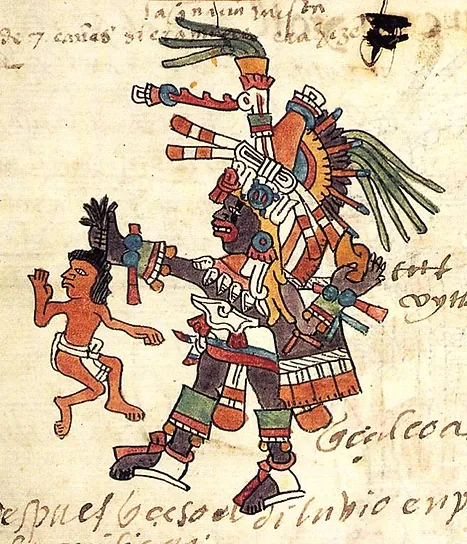
"Several Indian nations, such as the Mayans, Aztecs, and Incas, worshipped black gods along with their other deities, and the Mayan religion particularly exemplifies the high esteem in which the negroes were held." --Harold G. Lawrence, The crisis, 1962
Why were all indigenous religions and spiritual systems deemed as "pagan" or "evil"and were replaced during colonizations? It would be hard to subjugate a people who were previously worshipped without replacing old traditions with new ones. Lets examine some of the anicent gods found right here in America before colonization. "Many Scholars have noted, the Black gods of the Americas are typically gods of
medicine and healing, trade, or music and dance. According to these scholars, these associations are based on the traditions introduced by actual Black people."
1. EKCHUAH, THE BLACK STAR

EKCHUAH, was the sixth most commonly depicted deity in the Mayan codices, protrayed at least forty times. He is painted Black with thick lips, His name means "Black Star" (ek means "star" and chuah means "black" in Yucatan Maya). Flod Hayes III reports that among many of the Indians of Guatemala, "the black Christ is referred to in private as Ekchuah," who Harold Lawerence describes as "black and woolly-haired" and "unmistakenly Negro." In Africa and the Discovery of America, Leo Weiner connects the Mayan god Ekchuah to the African Nama societies of the Malinke and Bambara people of West Africa. Ekchuah may have been based on an older Black god, known to us only as God M.
2. GOD M
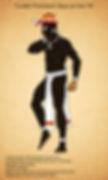
God M is represented throughtout the ancient codices as a Black god, specifically an "old man" with a toothless jaw or one tooth. He appears to be a trader, often shown carrying goods on his head. In volume III of Africa and the Discovery of America Leo Weiner says West Africans like Malinkes and Bambaras made voyages to the Americas long before Columbus. He identifies many of the Mayan and Aztec gods as being derived from the reverance paid to these Black visitors.
3. THE MAYAN PRIESTS

Frederick Peterson, In his 1959 work Ancient Mexico, remarked: " We can trace the slow progress of man in Mexico without noting any definite Old World influence during this period (1000-650BC), except possibly a strong Negroid substratum connected with the Magicians. "
The Magician may have been West Africans who traveled to Mexico or a class of Black people who could ONLY marry among themselves, effectively presereving the African phenotype over untold generations. This reverence for Black people may have something to do with why many Native Americans, inculding the Mayas, respected enslaved Africans and revered Black gods that represented the principles of healing and good fortune.
4. TEZCATLIPOCA, THE AZTEC GOD
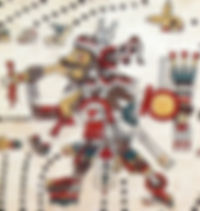
Tezcatlipoca was one of the most important gods in ancient Mesoamerica. He began as important diety for the Toltecs and later became the supreme god of the Aztecs. He was seen as a Creator, the god of sustenance, a patron god of warriors, and the bringer of both good and evil. "Black Tezcatlipoca" is the most feared and highly revered. The earliest representations of him represent him as black. His priest would cover themelves in black soot or charcoal to associate themselves with the Black god. They would also paint the newly appointed king black to associate him with Tezcatlipoca.
5. KOKOPELLI, THE GREAT HUNTER

Kokopelli is a well-known fertility god and hunter among the Hopi and Zuni people of the America southwest. As the spirit of fertility, he is seen as responsible for introducing corn (agriculture) to various peoples across the Americas. Kokopelli was first found in Anasazi rock cravings, but he also appears in Missippian artifacts. Throughout South America, he is known as Ekoko. He is believed to descend from the Mayan Ekchuah. Kokopelli is identified with the southwestern Tewa people's god Nepokwa'i, a great hunter who is described as "a big black man."
6. BLACK GOD OF THE NAVAHO

Among the Navaho, there is a deity known as Black God. He is not widely-celebrated, but is very important because his knowledge of medicine saved the rest of the Navaho gods from certain death. Black God is the Navajo god of fire. Perhaps because of this, he is also considered the creator of the stars. He is often depicted as black "like space" and wearing a crescent moon on his forehead, with the stars of Pleiades dotted on his temple. But Black God was most likely a medicine man before he came to be known as the god of fire.
Article Source::
Black God: An Introduction To The World's Religions And Their Black Gods by Dr. Supreme Understanding
21 notes
·
View notes
Text
Vastu Shastra
Vastu Shastra is the ancient Indian science of architectural design and spatial configuration which assigns specific Earth directions to each planet. This practice aims to harmonize the living environment with pure cosmic energies, enhancing well-being, prosperity, and overall harmony.
Directions and Associated Planets in Vastu Shastra
East
Associated Planet: Sun (Surya)
Significance: The east direction is governed by the Sun, representing vitality, growth, health, and energy. It is considered a highly auspicious direction
Best use: it is recommended for the main entrance of a house, clean living rooms with big windows and open space for better air ventilation, and places where important activities are conducted.
What to avoid: staircases, bedrooms (Solar energy is too active for relaxation and sleeping), bathroom or a toilet or a closed storage space
West
Associated Planet: Saturn (Shani)
Significance: The west direction is governed by Saturn, representing discipline, hard work, and stability
Best Use: It is suitable for storage areas, bathrooms, and spaces requiring calm and concentration
What to avoid: excessive furniture, kitchens and fireplaces, big openings in a room or a living area ( the Eastern, i.e., solar energy isn't stored in the West if there are big openings. Solar Energy rises from the East and sets in the West, hence it will spoil the prospect of income with big openings in the Western direction)
North
Associated Planet: Mercury (Budha)
Significance: The north direction is governed by Mercury, symbolizing intellect, knowledge, communication, and business. It is considered favourable for business activities, cash flow, and studies
Best Use: Minimalistic offices, open study rooms, and places for financial transactions
What to avoid: bedrooms, storage rooms, toilets, heavy structures, fire elements ( might cause accidents)
South
Associated Planet: Mars
Significance: The south direction is governed by Mars, representing energy, strength, and courage. It is recommended for areas that require protection and fortification
Best Use: Closed areas with thick walls (e.g., storerooms), workshop areas (especially for fire-related works) and kitchens (close to the fire and heating elements)
What to avoid: placing other elements (unfriendly to fire), bedrooms, office and study areas
Northeast
Associated Planet: Jupiter (Guru)
Significance: The northeast direction is governed by Jupiter, representing wisdom, spirituality, prosperity and growth. It is highly auspicious and should be kept clean and open, with minimal construction
Best Use: Prayer rooms, minimalistic meditation spaces, water elements, all kinds of quiet corners, home libraries, home gardens and clean living rooms
What to avoid: assembling toilets, heavy structures, kitchen and storage areas, places with excessive electronic devices
Northwest
Associated Planet: Moon (Chandra)
Significance: The northwest direction is governed by the Moon, symbolizing emotions, psyche, care, nutrition ( especially milk and dairy products), relationships and travel. It is suitable for guest rooms, kitchens, and storage areas
Best Use: Guest rooms, children's bedrooms, calm places, bathrooms and water elements, kitchens (dining area where the meal is served), organized storage areas, study rooms with
What to avoid: heavy storage, places with excessive electronic devices, workout zones ( too active for Moon energy), open spaces with direct sunlight
Southeast
Associated Planet: Venus (Shukra)
Significance: The southeast direction is governed by Venus, representing feelings, leisure, arts, style, pleasures, wealth, luxury, and harmony
Best Use: marital bedrooms (enhances marital harmony, romantic relationships), living rooms, dressing rooms, kitchen (dining) area, art studios, music rooms
What to avoid: calm places for meditation, guest rooms (better for the Moon energy and the northwestern direction)
Southwest
Associated Planet: Rahu (Upagraha - a shadow planet or a Nothern Lunar Node)
Significance: The southwest direction is governed by Rahu, known for its intense and transformative energies. Rahu represents power, material desires, and nighttime. It has a profound influence on the physical and psychological aspects of an individual's life. A well-arranged zone can boost confidence, popularity and wealth. A badly arranged zone can cause behavioural issues (anxiety, depression), feeling low and energy loss.
Best Use: Master bedrooms on a high floor, organized storerooms and wardrobes; areas requiring stability, structure, confidence, grounding and protection
What to avoid: main entrances, water elements (including aquariums), bathrooms, children's areas (might be too overwhelming for kids), and lightweight furniture (this area benefits from solid and substantial structures)

12 notes
·
View notes